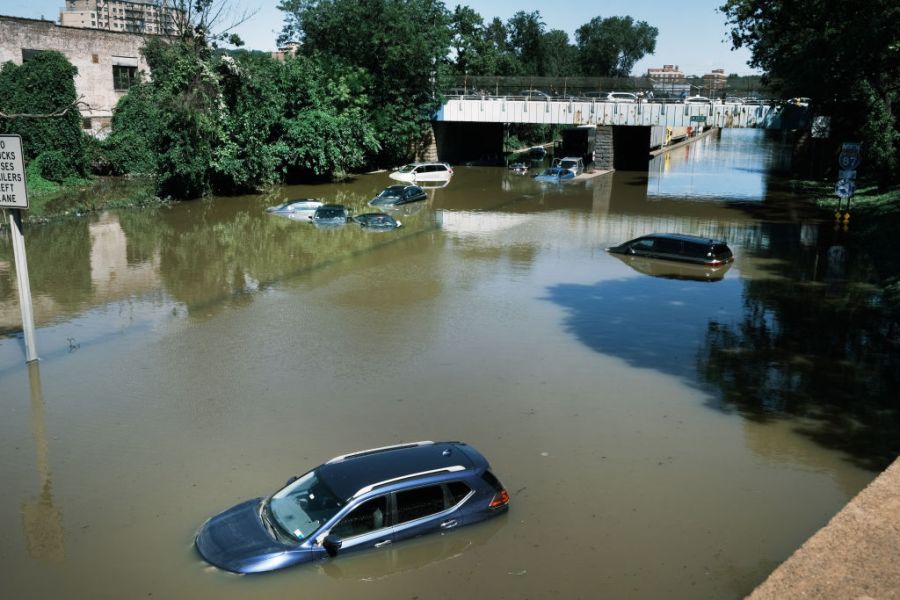Water infrastructure: It’s boring. Invisible. We only care about it when things go wrong.

This episode originally aired Sept. 9, 2021.
Things have been going wrong. Punishing storms have caused catastrophic flooding in New York, Texas, Louisiana and elsewhere.
But water systems are expensive, time-consuming and hard to fix. Technology may provide some relief.
Paul Robinson is executive director of RISE Resilience Innovations, a nonprofit accelerator in Norfolk, Virginia, that helps develop climate tech. He said one of the companies Rise funds is StormSensor, which puts sensors in storm and sewer pipes. The following is an edited transcript of our conversation.

Paul Robinson: [Sensors] measure the amount of flow and in which direction it’s flowing and how full the pipe is. And you want to know if your pipe is full or blocked or flowing the wrong way. That’s important for the city to know. They can react to that.
Jed Kim: Well, how hard is it for cities to know what the status of their pipes are?
Robinson: Right now, it’s not easy because the pipes are buried, and there’s no one down there on a regular basis. So you don’t know if sediment is building up, or if there’s a garbage bag and some sticks down there that’s creating a blockage. So having sensors placed within the stormwater pipe, making measurements and reporting them out to the cloud for analysis is pretty important. And that’s what StormSensor’s come in and done in our region. They put 20 sensors that will start to detect the direction of the flow. We’re on a river, and the river is on the coast, and so we’re affected by the high tide. The river and the ocean come up the stormwater system, and when there’s a storm surge, it can go really far up the stormwater system and come out the drains and start to flood the city streets. So knowing that that’s going to happen helps the city understand how their streets are going to be affected. Also, if they can detect part of the system is being clogged with sediment, that helps them send a crew over with a vacuum truck to clean up the blockage so that it doesn’t get any worse.
Kim: Why is an innovation accelerator needed to address these issues?
Robinson: What seems to happen is cities are made up of very, very busy people. These people are running cities, and they really don’t have the time and the wherewithal to look around and see different ways of doing things. So the tendency is to go with what has been done. We’re in the fortunate position here of being able to work with the cities, and they say, “Well, this is what we need. If you can get someone to figure it out, we want to use it.” So we de-risk that with the money we provide the companies to test new technologies. So it’s quite attractive for the city.
The future of this podcast starts with you.
Every day, the “Marketplace Tech” team demystifies the digital economy with stories that explore more than just Big Tech. We’re committed to covering topics that matter to you and the world around us, diving deep into how technology intersects with climate change, inequity, and disinformation.
As part of a nonprofit newsroom, we’re counting on listeners like you to keep this public service paywall-free and available to all.
Support “Marketplace Tech” in any amount today and become a partner in our mission.












